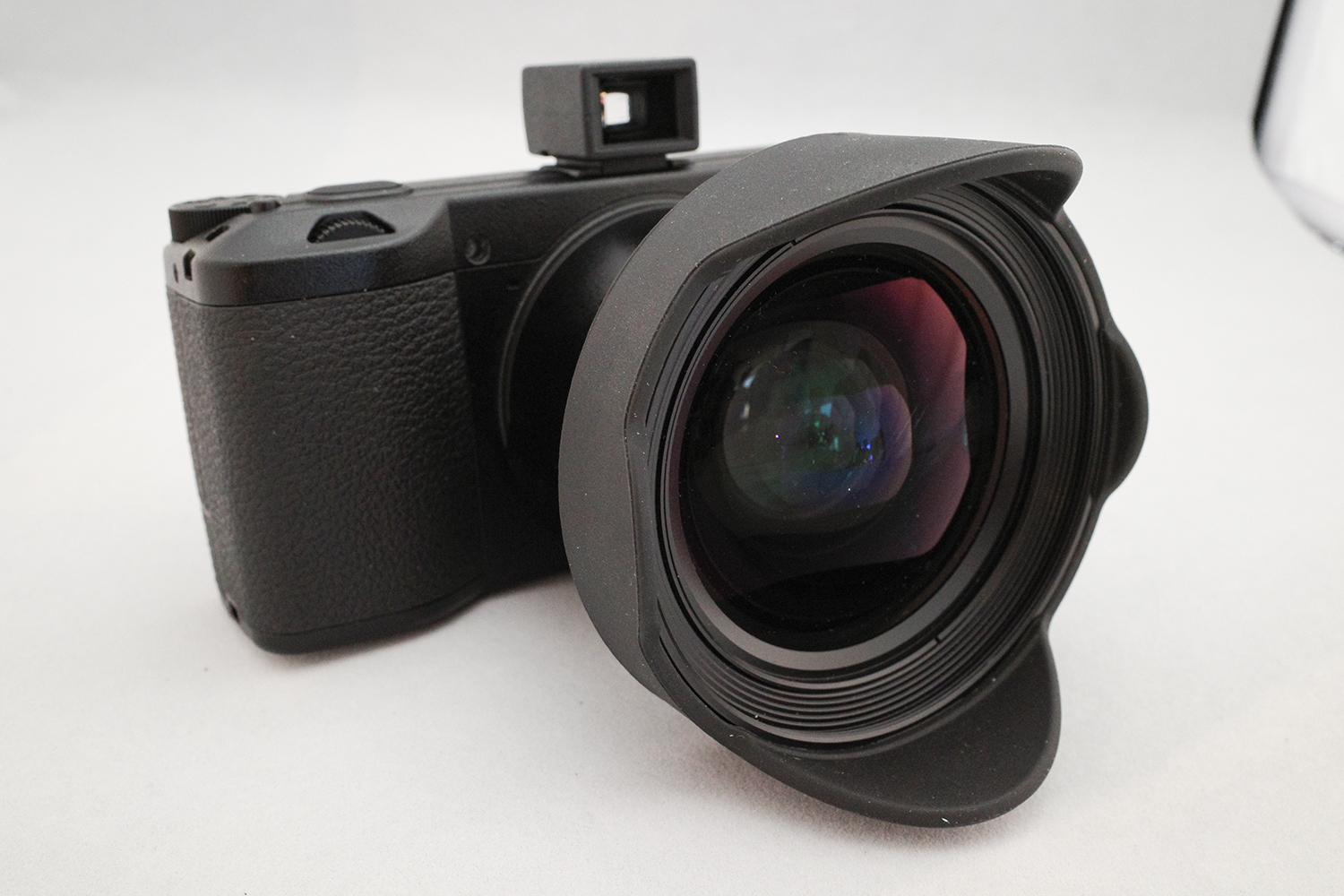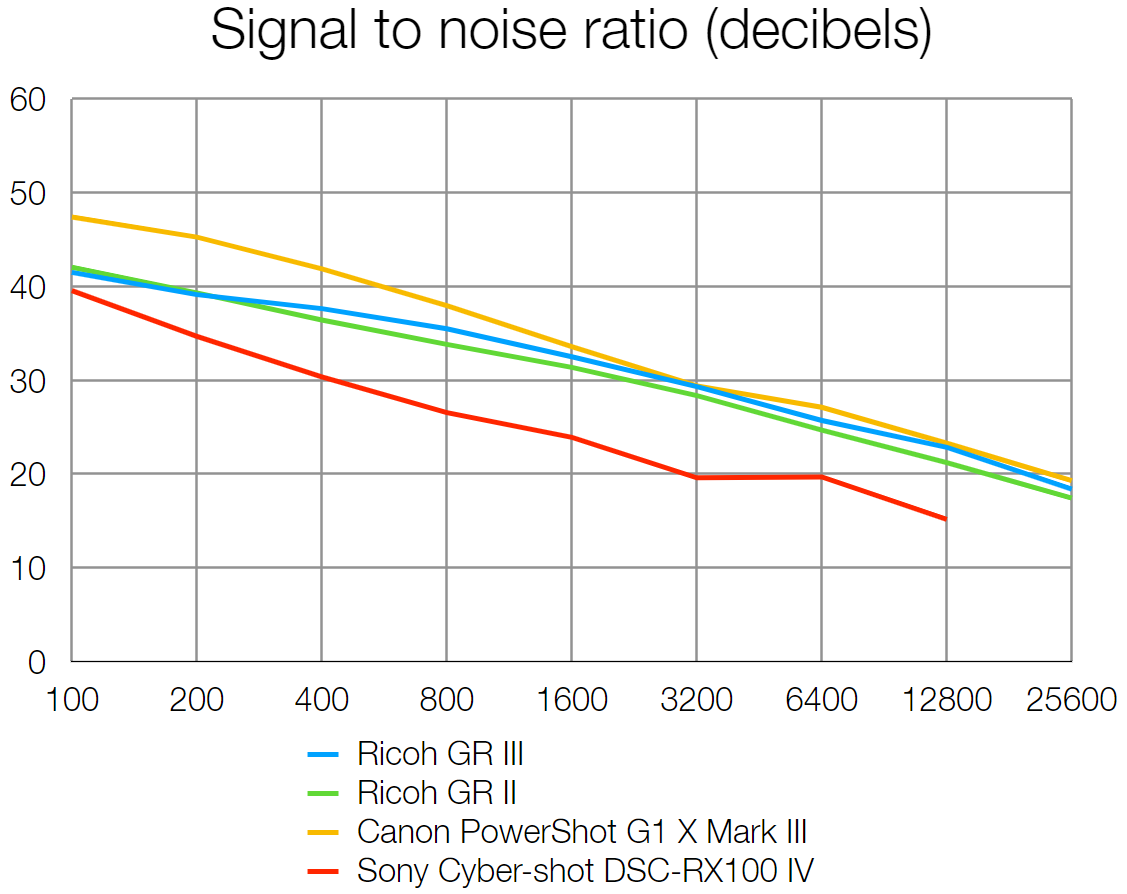Digital Camera World Verdict
GR fans, or GRists as Ricoh call them, will love this update of an iconic camera. But in the world of multi-lens camera phones the wider appeal of this fixed lens compact will probably be limited. This is a beautiful-sized APS-C compact, ideal for carrying around in the pocket, and for discrete street photography. But this is sold at a luxury price that is no longer justified by the the build quality or the feature set.
Pros
- +
Small size with big sensor
- +
Great for one-handed shooting
Cons
- -
A lot of money
- -
No tiltable screen or eyelevel viewfinder
- -
No built-in flash
Why you can trust Digital Camera World
The Ricoh GR was first launched over 20 years ago... and the new GR III will be the 12th generation of this camera that was first conceived in the analog era. The basics of the camera remain the same. It has a fixed wide-angle lens, equivalent to a 28mm in old 35mm terms.
This is luxury camera, and sells itself on its small size and image quality. The GR series has a cult following, loved by travel photographers and street specialists, that want a camera that slips easily into your pocket.
Nowadays, of course, everyone already has a wide-angled camera with them at all times in the shape of the camera phone. So it is no surprise that the Ricoh GR III has needed to add more technical tricks to its armory in order to ensure it is still relevant in the smartphone era.
Ricoh GR III - features
This latest digital version packs in a decent-sized APS-C sensor with a 24 megapixel count. There is no anti-alias filter on the camera, but the incorporation of a dust removal system on the system, means that sensor vibration can be used as an electronic anti-aliasing filter should you need to engage this to avoid problems with moiré.
To appeal to the serious shooter, the GR III offers full 14-bit RAW shooting – but video recording is limited to Full HD (there's no 4K here). RAW files can be developed in the camera.
The 18.3mm f/2.8 lens is comprised of six elements in four groups - and has a nine-blade diaphragm to help with the bokeh. The fixed lens has no zoom capabilities, of course, but does provide 35mm and 50mm crop modes for those who want to get in closer. And there is also an optional ultra-wide screw-in converter (the GW-4) that gives an effective focal length of 21mm.
A new addition is a three-axis image stabilisation, that gives a four-stop improvement in the shutter speed you can get away with for handheld exposures. ISO has been boosted too to a maximum of 102,400 - which will help cement the camera's low-light credentials.
The best camera deals, reviews, product advice, and unmissable photography news, direct to your inbox!
Autofocus also now benefits from Hybrid AF - using phase detection for speed, and contrast detection for accuracy. There is a macro mode that allows you to focus down to subjects in the 5 - 12cm range. And you can focus manually too - with such mod cons as focus peaking to help you to do this accurately.
The camera comes with no fewer than ten image filters - which are all customisable. Of more interest will be the HDR function, and an intervalometer that allows you to shoot in 10 minute increments for up to 24 hours. There is an multiple exposure mode, that Ricoh tells us you can overlay up to 2000 images on the same frame.
Another neat trick is the provision of a built-in two-stop optical ND filter - to help you use wider apertures when shooting video, or to extend the shutter speed for stills.
Its connectivity credentials are strong. Bluetooth and WiFi come as standard - allow you to link the camera to your phone using Ricoh's ImageSync app. And there is a USB-C socket for data transfer and charging.
In July 2020, the manufacturer introduced a special limited edition of the camera, the Ricoh GR III Street Edition. The camera body has been treated with a metallic grey finish with grained texture, designed to "reflect the rough asphalt of the streets", and to improve the grip. The camera also gets a distinctive yellow ring around the lens (although this can be switched to a black one, if you so choose. The increased cost of this version is partly justified by the inclusion of a GV-2 slot-in eyelevel viewfinder that has 28 emblazoned on it in yellow, and two batteries.
Ricoh GR III - handling
The beauty of this camera is in its size, Ricoh has gone to great lengths to make this smaller than its predecessor. The result is a camera that is easy to use one-handed - turning this into the ultimate snapshot camera. But it must be noted to get the camera to this size, the GR III does make do without a built-in flash.
A weakness however is that you do not have an eyelevel viewfinder as standard (an optional one is available that plugs into the hotshoe). You are therefore forced to use the three-inch one-million-dot LCD on the rear for all composing and settings.
This LCD is now touch-sensitive, which makes it easy to choose the point you want to focus on, for instance. However the screen is not tiltable, which can prove a bane when shooting at high-or low angles – or when dealing with bright sunlight.
The camera offers a good range of buttons and dials to aid the use of its full feature set. There are thumbwheels front and rear, for instance. And as well as no less than three customisable user modes, on the exposure mode dial, there is also a customisable Function (Fn) button on the rear. The thumbwheels however do not feel particularly substantial or as nice-to-touch as you might hope for on a camera at this sort of price.
Ricoh is making a big thing about the camera's start-up time.... its motorised lens can be out and ready in just 0.8sec when you press the On button. However, you will soon notice that the camera switches itself soon enough – which could prove a downer to those who want the camera to be always ready for the decisive moment.
Lab tests
Ricoh GR III - lab data
Signal to noise ratio:
Both the GR II and GR III use the same size of sensor (APS-C), but where the GR II had to make do with 16MP, the GR III gets 24.2MP. That means smaller individual photosites on the sensor, and in some cameras this can translate to less light sensitivity and therefore noisier images.
Ricoh's engineers have managed to avoid this pitfall, as the GR III generates slightly cleaner images than the old GR II throughout the sensitivity scale. Not to the extent that you'd really notice during real world shooting, but it's nice to know you've got extra resolution without any negative side effects.
The lab performance is slightly below that achieved with the Canon G1 X Mark III which also features a 24 megapixel sensor.
Dynamic range:
Not only does the GR III produce images with minimal noise, it's also capable of recording respectable dynamic range right up to ISO 12,800. Things do drop off more steeply after that, but the GR III still narrowly beats the lower-resolution GR II, as well as the Canon G1 X III, which also packs a 24.2MP APS-C sensor.
Resolution:
It's initially surprising that the 24.2MP GR III struggles to produce a noticeably better resolution result that the old 16MP GR II. However this graph doesn't tell the whole story. Although the GR III tops out at 28 lw/ph through most of its sensitivity scale, it's only moiré partially masking the converging parallel lines on our resolution test chart that prevents the GR III scoring higher in this test. The camera is capable of resolving finer detail in real-world scenarios than the GR II.
Sample images
Sample gallery


Verdict
GR fans, or GRists as Ricoh call them, will love this update of an iconic camera. But in the world of multi-lens camera phones the wider appeal of this fixed lens compact will probably be limited. This is a beautiful-sized APS-C compact, ideal for carrying around in the pocket, and for discrete street photography. But this is sold at a luxury price that is no longer justified by the the build quality or the feature set.
See also
Ricoh GR IIIx review
Ricoh GR III vs GR IIIx
The best digital compact cameras
The best travel cameras
Best action cameras

Chris George has worked on Digital Camera World since its launch in 2017. He has been writing about photography, mobile phones, video making and technology for over 30 years – and has edited numerous magazines including PhotoPlus, N-Photo, Digital Camera, Video Camera, and Professional Photography.
His first serious camera was the iconic Olympus OM10, with which he won the title of Young Photographer of the Year - long before the advent of autofocus and memory cards. Today he uses a Sony A7 IV, alongside his old Nikon D800 and his iPhone 15 Pro Max.
He is the author of a number of books including The Book of Digital Photography, which has been translated into a dozen different languages.
In addition to his expertise in photography and videomaking, he has written about technology for countless publications and websites including The Sunday Times Magazine, The Daily Telegraph, What Cellphone, T3 and Techradar.













